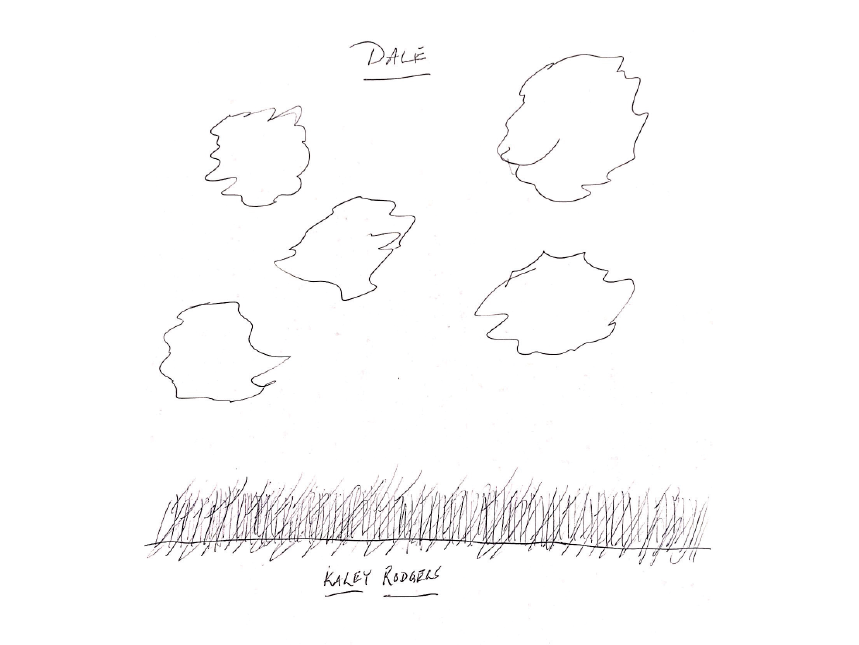
Eliciting Images of Spirituality

When participants in the Fetzer Institute's Study of Spirituality in the United States were asked to draw a picture representing spirituality, researchers were using a social scientific research technique known as elicitation interviewing. This approach invites an interviewee to respond to a prompt with a photo or drawing. Next, these materials are used in a conversation that invites the interviewee to tell the story behind the image. Consider the drawing created by Dale, a 69-year-old man from Des Moines who describes himself as not religious but slightly spiritual. His picture shows a stretch of grass from one side of the page to the other under a sky filled with clouds that look like cotton balls. The content of the sketch connects his understanding of spirituality with the natural world like many other Americans. Behind his picture, there is a story to be discovered.
“When I was a boy ... I laid down in a soft grassy meadow somewhere. I remember looking up at the sky and the clouds and it was warm. I always go back to this so-called happy place, but you could call it a spiritual place. I don’t know if I’ve ever been in a more peaceful feeling than I had at that moment. So, I just go back to it when I need it.”
Dale, 69
Slightly spiritual / Not religious at all
The drawing elicited an important narrative about what spirituality means to Dale. It invokes feelings connected to a childhood memory and a specific location. His comments invite questions about when, why, where, how, and how often Dale goes back to this happy, spiritual place. It also invites broader inquiry into the relationship between spirituality and nature, spirituality as both a passive experience and an active seeking, and the benefits of spiritual practice in our lives.
Visual research techniques like these can expand what is possible to discover in interviews. Some researchers look to drawings or photos that emerge in elicitation interviews as answers to questions they may not have known to ask. As such, participants guide researchers down novel pathways of understanding. In the case of an inductive inquiry into spirituality like this one, these discoveries inform later stages of research, making for a robust methodology grounded in the everyday lives of participants.
This Expert Insight is from Roman R. Williams, Ph.D., executive officer of the Society for the Scientific Study of Religion.


